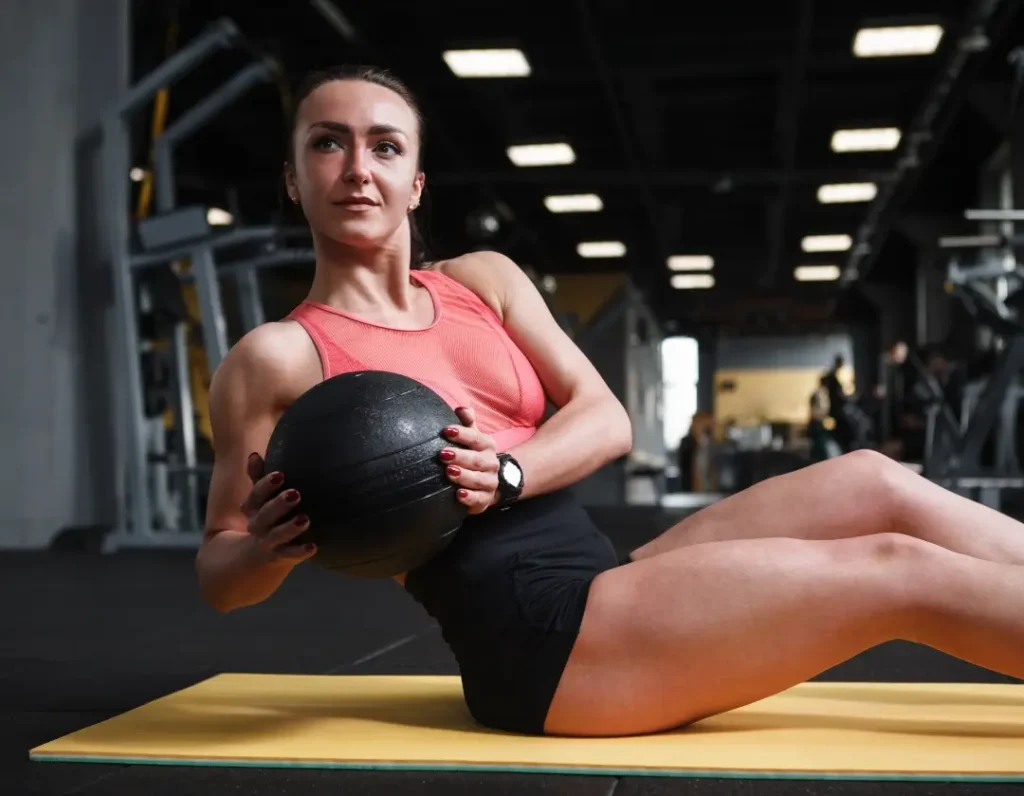
While discussing post-pregnancy well-being, the impact of mother’s way of life and routine can never be denied. The female body goes through changes in the physical and mental viewpoints while in pregnancy and labor.
So afterward, to get once again into regular daily life, they need to focus on their fitness and well-being. And for that they can adopt different exercise strategies that are safe as well as very effective in getting back into shape.
Pelvic Floor Strengthening
After labor, to acquire wellness, pelvic floor fitness and strengthening become critical.
Discussing the muscles of the pelvic floor, it’s important to recognize their essential role as a support network for the pelvic organs, significantly influencing bladder control, bowel functionality, and the operation of the uterus.
During pregnancy and childbirth, the pelvic floor endures substantial stress. This pressure can heighten the chances of experiencing conditions such as urinary incontinence and pelvic organ prolapse, often resulting from weakened pelvic floor muscles.
In the video below, you will:
– Learn about various pelvic floor exercises, from basic to advanced.
– See demonstrations on proper execution of each exercise.
– Understand the importance of correctly engaging pelvic muscles.
– Be guided through techniques such as pelvic clocks and progressive movements.
– Learn how to use a ball for added challenge in your exercises.
– Gain a comprehensive understanding of strengthening pelvic floor muscles.
– Discover how these exercises enhance pelvic and hip stability.
Preventing Common Postpartum Conditions
Both of these are serious issues; to keep them away, you really want strength in your pelvic floor. And for strength in your pelvic floor, you would have to exercise your pelvic floor muscles. There are different activity techniques that you can utilize, such as kegels and pelvic tilts.
These are designated practices and are exceptionally easy to do. Because of the straightforwardness of these activities, you can integrate them into your everyday routine and help yourself. These activities are simple contracting and relaxing of the pelvic floor muscles. But they are efficient in continuously strengthening your pelvic floor strength.
Mastering Pelvic Floor Exercises
Another essential point, is your focus on using the proper or right form when doing pelvic floor exercises. Because if you are not sticking to proper form, then it will not give you the required benefits but instead just puts strain on your muscles, which is undue.

Core Rebuilding
The other part of the body that might need strengthening is the core. With pregnancy, the core muscles are weakened due to continuous stress, and also the muscle forms overall changes.
This has a lot to do with hormonal changes as well as the expansion of the uterus. So, all these sequences of events combined change the abdominal muscle tone.
So, after childbirth, you need to focus on these changes that have already occurred to your body and then focus on the rebuilding exercises to build the strength in your core muscles.
Core Muscles Exercises Post-Pregnancy
In this section, you will find various exercises for rebuilding core strength after pregnancy:
1. Pelvic Tilts: Engage and strengthen core muscles.
2. Modified Planks: A less intensive version of traditional planks, focusing on core strength without excessive pressure.
3. Gentle Crunches: Ease into abdominal workouts, ideal for post-childbirth conditioning.
4. Leg Slides: Gentle exercises to strengthen the core muscles.
5. Bridge Exercises: Target core muscles, lower back, and glutes, particularly beneficial for women.
6. Diaphragm Breathing Exercises: Important for promoting core and breath movements, aiding in the rebuilding of core strength.
A Quick Note:
In all these exercises, the main motive is to make your core capable enough for normal core training. It is important to gradually increase the intensity of the workout but be mindful at the same time not to overdo workouts and take decent breaks for optimal recovery.

Overall Body Conditioning
While you are in the recovery stage post-pregnancy, you must focus on the whole body’s fitness, and you should pick a holistic approach in which you join mental, physical, and profound aspects.
When you pick a holistic approach, you become aware of all the perspectives. So when you are thinking of everything and improving on all aspects, you grow and get benefits overall.
Post-Pregnancy Wellness through Full-Body Fitness
By overall body conditioning and focusing on the entire body fitness, you will improve your stamina and overall energy levels. And this will help you in your general daily life activities and well-being. With entire-body conditioning, you tend to remove your focus from the isolated muscle training, and this helps in the diversification of your training. All of your muscles in the body are conditioned, and hence, your energy levels overall increase.
Moreover, when you engage in diverse activities, you get various benefits, such as better cardiovascular health and positive signs in your weight loss journey overall.

The Key Workouts to Include in Your Routine
Brisk Walking: A low-impact way to regain fitness.
Cycling: Excellent for building endurance and cardiovascular health.
Swimming: Provides a full-body workout, ideal for post-pregnancy recovery.
Postnatal Yoga: Helps in developing a mind-body connection, essential for holistic fitness.
Importance of Gradual Progress
While you are in recovery post-pregnancy, most women make the mistake of rushing into the process of fitness, and they tend to ignore their body’s condition. They stress the body by un dew load, and their body at that state is not able to handle this load. Hence, it results in overall injuries, and they don’t get the desired fitness results they were looking for, and all their efforts go in vain.
Conclusion:
Remember, it’s crucial to listen to your body and not rush the process. Steady progress, combined with a variety of exercises, will not only boost your energy and stamina but also contribute positively to your overall well-being. Patience and consistency are your best allies on this journey back to fitness.
Blog Post Composed by:

Elena
IFBB ADVANCED BODYBUILDING PERSONAL FITNESS TRAINER SPECIALIST, PHYSIOTHERAPIST & REPS LEVEL 3 CERTIFIED PT

